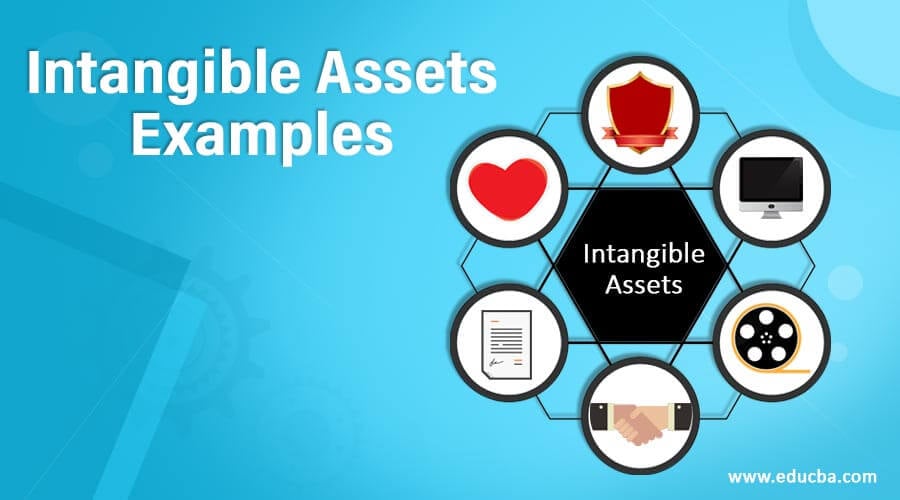Updated July 20, 2023
Introduction to Intangible Assets
Intangible assets lack a physical existence or substance, which means they cannot be touched or seen. Patents, trademarks, copyrights, brand recognition, goodwill, and software are examples of intangible assets. These assets are significant to a firm financial and overall success. However, they are difficult to measure and require specialized techniques for evaluation.
Explanation
Intangible assets can be divided into two types:
- Intellectual properties: trademarks, copyright, customer lists, etc.
- Goodwill: brand recognition, reputation, employee morale, etc.
Here are some of the important characteristics of intangible assets:
- They are non-physical and lack a tangible presence
- A business may develop its own intangible assets or acquire them from third parties
- While intangible assets cannot be touched or seen, their impact on a company’s operations and results can be observed and quantified.
- Identifying, valuing, and accounting for intangible assets can be complex and requires specialized knowledge and techniques.
- Intangible assets do not guarantee business success, but they can significantly drive growth and profitability.
Examples of Intangible Assets
Let’s understand intangible assets with different examples:
1. Goodwill
The most common form of intangible is goodwill. Often we keep hearing that the business of any specific entity is purely running based on the goodwill they have earned or purchased in the acquisition. The purchaser pays a premium to acquire any business, gaining leverage in the market. The premium has an indefinite life and is not subject to amortization over a period of time.
Example: The valuation of ABC Limited is $ 50 Mn. PQR wishes to acquire the same. Based on the market condition and future prospects, PQR is quoting the price of $ 65 Mn. The difference of $ 15 Mn is nothing but the goodwill purchased by PQR from this transaction
2. Trademark and Trade Dress
A trademark is a recognizable sign, design, or expression that identifies a particular source’s product or services from those of others. Trademark exclusively identifies the commercial source of products. It contributes to cash flows by increasing sales volume or enabling the owner to charge the brand premium.
Trade Dresses are unique product colors, shapes, or packaging. If registered with the government registrar, it fulfills the legal contractual criterion.
Example: XYZ Limited is the manufacturer of cookies and biscuits. They have trademark and Trade dress related to the size of the cookies, shape, packing material quality, color, look, feel, etc. Based on such trademark and trade dress owned in their name, no manufacturer in the United States can undertake the production of cookies and biscuits in a similar manner.
3. Patented Technology, Computer Software, Databases, and Trade Secrets
A patent is a combination of rights a nation grants an inventor for a limited period in lieu of detailed disclosure of an invention. Patents have a useful life of 20 years. They contribute to cash flows by enhancing the products made by the concern and from the royalty income when they are licensed out.
One can achieve an economic advantage over competitors or a group of competitors by utilizing a formula, practice, or design that is not generally known to others, known as a trade secret.
Example: Coca-Cola has had a trade secret formula for producing famous Coke since its inception. They also have patents and trade secrets for flavors used n manufacturing for over 100 years.
4. Copyrights Related to Artistic Work and Video and Audio-Visual Material
Copyrights protect plays, literary works, musical works, pictures, photographs, and audiovisual materials, and the copyright owner receives royalties or remuneration when granting permission to use the copyrighted property. Valuation of artistic-related assets is the most challenging because a creative asset has no market comparable.
Example: Mr. A produced Mission Possible movie. Mr. A has all satellite and broadcasting rights with the movie’s release. Thus, based on such rights, Mr. A has the full authority to determine the theatre where this movie will be released and the television channel on which it will be displayed.
5. Customer Relationships( Both Contractual and Non-Contractual)
The long-term relationship with customers has a great intangible value for the business. Customer relationships are developed from past contracts that have given a different edge to trade relationships. The value of customer contracts and related customer relationships may flow from either incremental cash flows owing to the contract or the potential of new contracts from the same customers.
A firm’s relationships with customers can have significant value. This value is occasionally referred to as the customer list on financial statements.
Example: ABC Bank is a credit card Company with a broad customer base and is undertaking a variety of transactions. The list of such transactions has huge value as it will depict the taste and preference of specific locations and geo.
6. Contractual Agreements
Contract-based intangible assets represent the value of rights arising out of contractual arrangements. Such arrangements are easily identifiable since they meet the contractual legal criterion. If the assessing party determines that any contracts mentioned will result in future cash flow for the contracting party or intangible liability, they may classify them as intangible.
Such rights are conferred-based agreement that allows one to carry on a business.
Following are the example of contracts related to intangibles:
- License agreements
- Construction, service, sourcing, and supply agreements
- Broadcasting permits
- Exploration rights
- Right of way
- Use rights
- Lease agreements
- Franchise agreements
- Contracts to service financial assets
Conclusion
Thus, intangibles have taken center stage in modern businesses. Companies control services’ production and supply based on various intangible rights. Few businesses are dealing with e-commerce, and internet technologies appear entirely intangible.
Recommended Articles
This is a guide to Intangible Assets Examples. Here we also discuss the introduction to Intangible Assets, detailed explanations, and examples. You may also have a look at the following articles to learn more –




